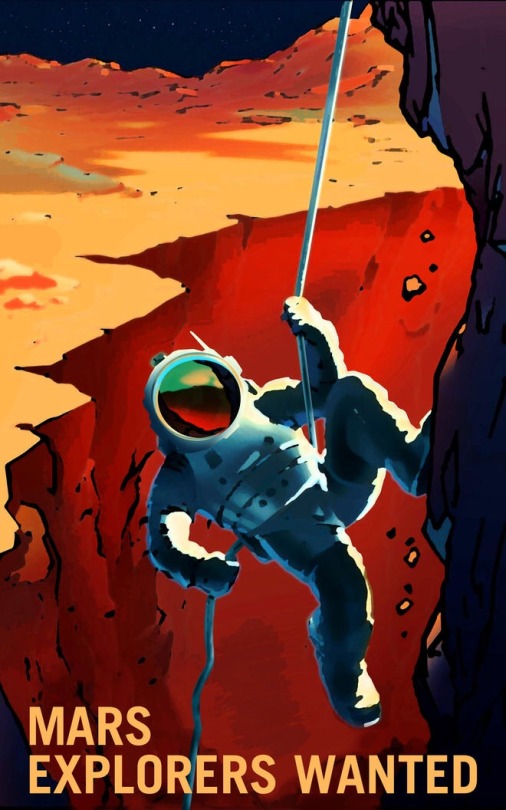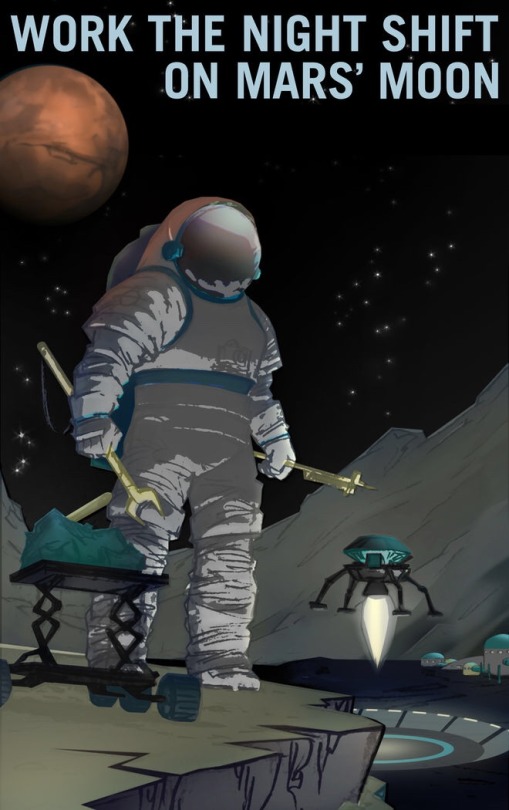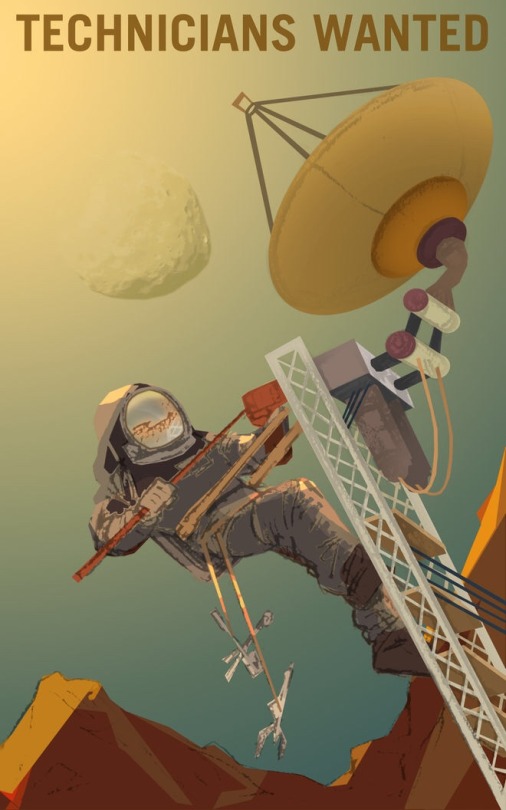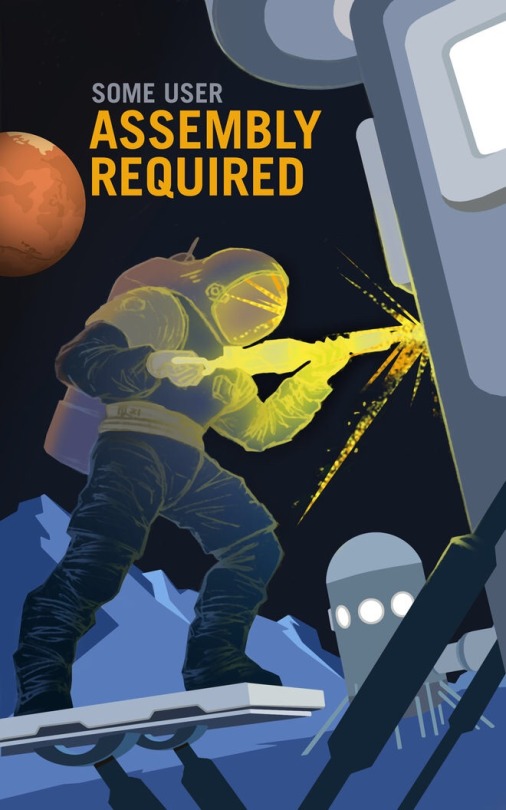Latest Posts by maevetheeuropan - Page 5


POTENTIAL HABITATS FOR EARLY LIFE ON MARS
Recently discovered evidence of carbonates beneath the surface of Mars points to a warmer and wetter environment in that planet’s past. The presence of liquid water could have fostered the emergence of life.
A new study by James Wray at the Georgia Institute of Technology and Janice Bishop of the SETI Institute, as well as other collaborators, has found evidence for widespread buried deposits of iron- and calcium-rich Martian carbonates, which suggests a wetter past for the Red Planet.
“Identification of these ancient carbonates and clays on Mars represents a window into history when the climate on Mars was very different from the cold and dry desert of today,” notes Bishop.
The fate of water on Mars has been energetically debated by scientists because the planet is currently dry and cold, in contrast to the widespread fluvial features that etch much of its surface. Scientists believe that if water did once flow on the surface of Mars, the planet’s bedrock should be full of carbonates and clays, which would be evidence that Mars once hosted habitable environments with liquid water. Researchers have struggled to find physical evidence for carbonate-rich bedrock, which may have formed when carbon dioxide in the planet’s early atmosphere was trapped in ancient surface waters. They have focused their search on Mars’ Huygens basin.
This feature is an ideal site to investigate carbonates because multiple impact craters and troughs have exposed ancient, subsurface materials where carbonates can be detected across a broad region. And according to study led James Wray, “outcrops in the 450-km wide Huygens basin contain both clay minerals and iron- or calcium-rich carbonate-bearing rocks.”
The study has highlighted evidence of carbonate-bearing rocks in multiple sites across Mars, including Lucaya crater, where carbonates and clays 3.8 billion years old were buried by as much as 5 km of lava and caprock.
The researchers, supported by the SETI Institute’s NASA Astrobiology Institute (NAI) team, identified carbonates on the planet using data from the Compact Reconnaissance Imaging Spectrometer for Mars (CRISM), which is on the Mars Reconnaissance Orbiter. This instrument collects the spectral fingerprints of carbonates and other minerals through vibrational transitions of the molecules in their crystal structure that produce infrared emission. The team paired CRISM data with images from the High Resolution Imaging Science Experiment (HiRISE) and Context Camera (CTX) on the orbiter, as well as the Mars Orbiter Laser Altimeter (MOLA) on the Mars Global Surveyor, to gain insights into the geologic features associated with carbonate-bearing rocks.
The extent of the global distribution of martian carbonates is not yet fully resolved and the early climate on the Red Planet is still subject of debate. However, this study is a forward step in understanding the potential habitability of ancient Mars.
Preview of paper: http://onlinelibrary.wiley.com/doi/10.1002/2015JE004972/abstract
TOP IMAGE….Ancient layered clay-bearing bedrock (top left) and carbonate bedrock (bottom right) are exposed in the central uplift of an unnamed crater approximately 42 kilometers in diameter in eastern Hesperia Planum, Mars. The image was taken by the High Resolution Imaging Science Experiment (HiRISE) instrument aboard the Mars Reconnaissance Orbiter. Credit: NASA/JPL/University of Arizona
LOWER IMAGE….Aeolian bed forms overlie ancient layered, ridged carbonate-rich outcrop exposed in the central pit of Lucaya crater, northwest Huygens basin, Mars. The image was taken by the High Resolution Imaging Science Experiment (HiRISE) instrument aboard the Mars Reconnaissance Orbiter. Credit: NASA/JPL/University of Arizona

The Ice House
Plan for habitation on Mars based on 3D-printed ice.
http://www.marsicehouse.com/


ARE MYSTERY MARS PLUMES CAUSED BY SPACE WEATHER?
Mysterious high-rise clouds seen appearing suddenly in the martian atmosphere on a handful of occasions may be linked to space weather, say Mars Express scientists.
Amateur astronomers using telescopes on Earth were the first to report an unusual cloud-like plume in 2012 that topped-out high above the surface of Mars at an altitude around 250 km.
The feature developed in less than 10 hours, covered an area of up to 1000 x 500 km, and remained visible for around 10 days.
The extreme altitude poses something of a problem in explaining the features: it is far higher than where typical clouds of frozen carbon dioxide and water are thought to be able to form in the atmosphere.
Indeed, the high altitude corresponds to the ionosphere, where the atmosphere directly interacts with the incoming solar wind of electrically charged atomic particles.
Speculation as to their cause has included exceptional atmospheric circumstances, auroral emissions, associations with local crustal anomalies, or a meteor impact, but so far it has not been possible to identify the root cause.
Unfortunately, the spacecraft orbiting Mars were not in the right position to see the 2012 plume visually, but scientists have now looked into plasma and solar wind measurements collected by Mars Express at the time.
They have found evidence for a large ‘coronal mass ejection’, or CME, from the Sun striking the martian atmosphere in the right place and at around the right time.
“Our plasma observations tell us that there was a space weather event large enough to impact Mars and increase the escape of plasma from the planet’s atmosphere,” says David Andrews of the Swedish Institute of Space Physics, and lead author of the paper reporting the Mars Express results.
“But we were not able to see any signatures in the ionosphere that we can categorically say were due to the presence of this plume.
“One problem is that the plume was seen at the day–night boundary, over a region of known strong crustal magnetic fields where we know the ionosphere is generally very disturbed, so searching for ‘extra’ signatures is rather challenging.”
To go further, the scientists have looked at the chances of these two relatively rare events – a large and fast CME colliding with Mars, and the mysterious plume – occurring at the same time.
They have been searching back through the archives for similar events, but they are rare.
For example, the Hubble Space Telescope observed a similar high plume in May 1997, and a CME was registered hitting Earth at the same time.
Although that CME was widely studied, there is no information from Mars orbiters to judge the scale of its impact at the Red Planet.
Space Station Research: Air and Space Science
Each month, we highlight a different research topic on the International Space Station. In June, our focus is Air and Space Science.

How is the space station being used to study space? Studies in fundamental physics address space, time, energy and the building blocks of matter. Recent astronomical observation and cosmological models strongly suggest that dark matter and dark energy, which are entities not directly observed and completely understood, dominate these interactions at the largest scales.

The space station provides a modern and well-equipped orbiting laboratory for a set of fundamental physics experiments with regimes and precision not achievable on the ground.
For example, the CALorimetric Electron Telescope (CALET) is an astrophysics mission that searches for signatures of dark matter (pictured above). It can observe discrete sources of high energy particle acceleration in our local region of the galaxy.
How is the space station contributing to aeronautics? It provides a long-duration spaceflight environment for conducting microgravity physical science research. This environment greatly reduces buoyancy-driven convection and sedimentation in fluids. By eliminating gravity, space station allows scientists to advance our knowledge in fluid physics and materials science that could lead to better designated air and space engines; stronger, lighter alloys; and combustion processes that can lead to more energy-efficient systems.

How is the space station used to study air? The Cloud-Aerosol Transport System (CATS) is a laster remote-sensing instrument, or lidar, that measures clouds and tiny aerosol particles in the atmosphere such as pollution, mineral dust and smoke. These atmospheric components play a critical part in understanding how human activities such as fossil fuel burning contribute to climate change.

The ISS-RapidScat is an instrument that monitors winds for climate research, weather predictions and hurricane monitoring from the International Space Station.

For more information on space station research, follow @ISS_Research on Twitter!
Make sure to follow us on Tumblr for your regular dose of space: http://nasa.tumblr.com

NASA Wants Deep Space Habitat Ideas
How will humans live on Mars? Well, NASA’s not really sure yet, but if you’ve got any ideas you can submit them now. The agency has just put out a call for proposals for “deep space habitation prototypes.”
from NASA’s press release:
NASA is soliciting proposals for the development of prototypes for deep space habitats that will give astronauts a place to call home during long-duration missions supporting the agency’s Journey to Mars.
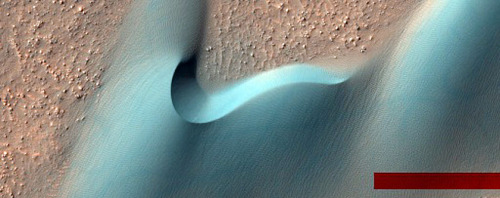
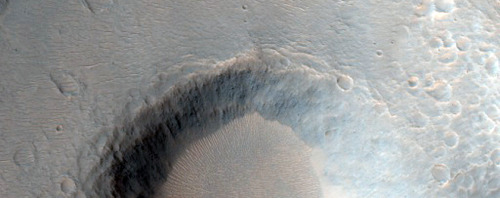

New HiRISE Images
NASA’s HiRISE mission has just released an amazing swathe of new images of the Martian surface.
This mission’s a personal favorite as their images have been detailing Mars in an almost “Google Earth” manner of beauty. From the Martian sky you can see the dunes, craters and other features that litter the landscape, revealing the clues that detail the mysterious story of Mars.
See the images here!
(Image credit: NASA/JPL/University of Arizona)

Mars used to be much more Earth-like than we once thought. The Curiosity rover recently discovered high levels of manganese oxide, which can only exist in oxygen-rich environments. This means Mars used to have as much oxygen as Earth and plenty of water on its surface. Source Source 2


Elon Musk wants to put people on Mars in less than a decade
Musk has already said he wants SpaceX to start sending unmanned missions to Mars in 2018. He has even planned out the details of the future expeditions.
Follow @the-future-now

That looks pretty damn cool.
(via The World’s First ‘Marschitect’ Is Laying the Groundwork for Architecture in Space — How We Get To Next)
Spacewalk Friday: Installing a New "Parking Spot" on Station
This Friday, Aug. 19, two U.S. astronauts will install a new gateway for American commercial crew spacecraft at the International Space Station.

Commercial crew flights from Florida’s Space Coast to the International Space Station will restore America’s human spaceflight launch capability and increase the time U.S. crews can dedicate to scientific research.

The adapter being installed (imaged below) was launched on a SpaceX Dragon cargo spacecraft and arrived on orbit July 20. NASA astronauts Jeff Williams and Kate Rubins will perform the spacewalk to install the equipment this Friday, Aug. 19. This will be the fourth spacewalk in Williams’ career and the first for Rubins.

Four previous spacewalks…like the one below…helped set the stage for installation of this docking adapter. During those previous spacewalks, other crew members laid hundreds of feet of power and data cables outside the space station.

On Wednesday, the robotics team using the Canadarm2 and its attached “Dextre” manipulator, will reach into the SpaceX Dragon trunk and pull out the docking adapter and position it for Friday’s spacewalk activities.

The morning of the spacewalk, while the astronauts are getting suited up, the robotic arm will position the docking adaptor near the port so that it will be ready for installation.

The two astronauts will venture outside the space station to install the first International Docking Adapter (IDA). This new adapter port will provide a parking space for U.S. Commercial Crew vehicles.
Watch LIVE!
Coverage of the spacewalk begins at 6:30 a.m. EDT on Friday, Aug. 19; with the spacewalk scheduled to begin at 8:05 a.m. EDT. Stream live online HERE.
Make sure to follow us on Tumblr for your regular dose of space: http://nasa.tumblr.com
Getting to Mars: What It’ll Take
Join us as we take a closer look at the next steps in our journey to the Red Planet:
The journey to Mars crosses three thresholds, each with increasing challenges as humans move farther from Earth. We’re managing these challenges by developing and demonstrating capabilities in incremental steps:
Earth Reliant

Earth Reliant exploration is focused on research aboard the International Space Station. From this world-class microgravity laboratory, we are testing technologies and advancing human health and performance research that will enable deep space, long duration missions.
On the space station, we are advancing human health and behavioral research for Mars-class missions. We are pushing the state-of-the-art life support systems, printing 3-D parts and analyzing material handling techniques.
Proving Ground

In the Proving Ground, we will learn to conduct complex operations in a deep space environment that allows crews to return to Earth in a matter of days. Primarily operating in cislunar space (the volume of space around the moon). We will advance and validate the capabilities required for humans to live and work at distances much farther away from our home planet…such as at Mars.
Earth Independent

Earth Independent activities build on what we learn on the space station and in deep space to enable human missions to the Mars vicinity, possibly to low-Mars orbit or one of the Martian moons, and eventually the Martian surface. Future Mars missions will represent a collaborative effort between us and our partners.

Did you know….that through our robotic missions, we have already been on and around Mars for 40 years! Taking nearly every opportunity to send orbiters, landers and rovers with increasingly complex experiments and sensing systems. These orbiters and rovers have returned vital data about the Martian environment, helping us understand what challenges we may face and resources we may encounter.

Through the Asteroid Redirect Mission (ARM), we will demonstrate an advanced solar electric propulsion capability that will be a critical component of our journey to Mars. ARM will also provide an unprecedented opportunity for us to validate new spacewalk and sample handling techniques as astronauts investigate several tons of an asteroid boulder.
Living and working in space require accepting risks – and the journey to Mars is worth the risks. A new and powerful space transportation system is key to the journey, but we will also need to learn new ways of operating in space.
We Need You!

In the future, Mars will need all kinds of explorers, farmers, surveyors, teachers…but most of all YOU! As we overcome the challenges associated with traveling to deep space, we will still need the next generation of explorers to join us on this journey. Come with us on the journey to Mars as we explore with robots and send humans there one day.
Join us as we go behind-the-scenes:
We’re offering a behind-the-scenes look Thursday, Aug. 18 at our journey to Mars. Join us for the following events:
Journey to Mars Televised Event at 9:30 a.m. EDT Join in as we host a conversation about the numerous efforts enabling exploration of the Red Planet. Use #askNASA to ask your questions! Tune in HERE.
Facebook Live at 1:30 p.m. EDT Join in as we showcase the work and exhibits at our Michoud Assembly Facility. Participate HERE.
Hot Fire Test of an RS-25 Engine at 6 p.m. EDT The 7.5-minute test is part of a series of tests designed to put the upgraded former space shuttle engines through the rigorous temperature and pressure conditions they will experience during a launch. Watch HERE.
Make sure to follow us on Tumblr for your regular dose of space: http://nasa.tumblr.com
Getting to Mars: 4 Things We’re Doing Now
We’re working hard to send humans to Mars in the 2030s. Here are just a few of the things we’re doing now that are helping us prepare for the journey:
1. Research on the International Space Station

The International Space Station is the only microgravity platform for the long-term testing of new life support and crew health systems, advanced habitat modules and other technologies needed to decrease reliance on Earth.

When future explorers travel to the Red Planet, they will need to be able to grow plants for food, atmosphere recycling and physiological benefits. The Veggie experiment on space station is validating this technology right now! Astronauts have grown lettuce and Zinnia flowers in space so far.

The space station is also a perfect place to study the impacts of microgravity on the human body. One of the biggest hurdles of getting to Mars in ensuring that humans are “go” for a long-duration mission. Making sure that crew members will maintain their health and full capabilities for the duration of a Mars mission and after their return to Earth is extremely important.

Scientists have solid data about how bodies respond to living in microgravity for six months, but significant data beyond that timeframe had not been collected…until now! Former astronaut Scott Kelly recently completed his Year in Space mission, where he spent a year aboard the space station to learn the impacts of microgravity on the human body.
A mission to Mars will likely last about three years, about half the time coming and going to Mars and about half the time on the Red Planet. We need to understand how human systems like vision and bone health are affected and what countermeasures can be taken to reduce or mitigate risks to crew members.
2. Utilizing Rovers & Tech to Gather Data

Through our robotic missions, we have already been on and around Mars for 40 years! Before we send humans to the Red Planet, it’s important that we have a thorough understanding of the Martian environment. Our landers and rovers are paving the way for human exploration. For example, the Mars Reconnaissance Orbiter has helped us map the surface of Mars, which will be critical in selecting a future human landing site on the planet.

Our Mars 2020 rover will look for signs of past life, collect samples for possible future return to Earth and demonstrate technology for future human exploration of the Red Planet. These include testing a method for producing oxygen from the Martian atmosphere, identifying other resources (such as subsurface water), improving landing techniques and characterizing weather, dust and other potential environmental conditions that could affect future astronauts living and working on Mars.

We’re also developing a first-ever robotic mission to visit a large near-Earth asteroid, collect a multi-ton boulder from its surface and redirect it into a stable orbit around the moon. Once it’s there, astronauts will explore it and return with samples in the 2020s. This Asteroid Redirect Mission (ARM) is part of our plan to advance new technologies and spaceflight experience needed for a human mission to the Martian system in the 2030s.
3. Building the Ride
Okay, so we’ve talked about how we’re preparing for a journey to Mars…but what about the ride? Our Space Launch System, or SLS, is an advanced launch vehicle that will help us explore beyond Earth’s orbit into deep space. SLS will be the world’s most powerful rocket and will launch astronauts in our Orion spacecraft on missions to an asteroid and eventually to Mars.

In the rocket’s initial configuration it will be able to take 154,000 pounds of payload to space, which is equivalent to 12 fully grown elephants! It will be taller than the Statue of Liberty and it’s liftoff weight will be comparable to 8 fully-loaded 747 jets. At liftoff, it will have 8.8 million pounds of thrust, which is more than 31 times the total thrust of a 747 jet. One more fun fact for you…it will produce horsepower equivalent to 160,000 Corvette engines!

Sitting atop the SLS rocket will be our Orion spacecraft. Orion will be the safest most advanced spacecraft ever built, and will be flexible and capable enough to carry humans to a variety of destinations. Orion will serve as the exploration vehicle that will carry the crew to space, provide emergency abort capability, sustain the crew during space travel and provide safe re-entry from deep space return velocities.
4. Making it Sustainable
When humans get to Mars, where will they live? Where will they work? These are questions we’ve already thought about and are working toward solving. Six partners were recently selected to develop ground prototypes and/or conduct concept studies for deep space habitats.

These NextSTEP habitats will focus on creating prototypes of deep space habitats where humans can live and work independently for months or years at a time, without cargo supply deliveries from Earth.

Another way that we are studying habitats for space is on the space station. In June, the first human-rated expandable module deployed in space was used. The Bigelow Expandable Activity Module (BEAM) is a technology demonstration to investigate the potential challenges and benefits of expandable habitats for deep space exploration and commercial low-Earth orbit applications.
Our journey to Mars requires preparation and research in many areas. The powerful new Space Launch System rocket and the Orion spacecraft will travel into deep space, building on our decades of robotic Mars explorations, lessons learned on the International Space Station and groundbreaking new technologies.
Make sure to follow us on Tumblr for your regular dose of space: http://nasa.tumblr.com
@maevemauvaise I doubt the full results of this experiment are going to be released soon, but I’ll post and tag you when I find them!


Meet the all-female team of coders that brought us Apollo 11.
In 1969, the world watched as Neil Armstrong marked his historic achievement with the words, “That’s one small step for man, one giant leap for mankind.” His now-famous transmission was heard around the globe thanks to NASA’s Deep Space Network, which made communication from outer space possible.
That network was built by a woman named Susan Finley. She was part of an all-female team of coders whose work was integral to the success of the Apollo 11 mission. Science writer Nathalia Holt brings us their stories in her book, Rise of the Rocket Girls: The Women Who Propelled Us from Missiles to the Moon to Mars.
Listen to their story here.
[Images via NASA]




